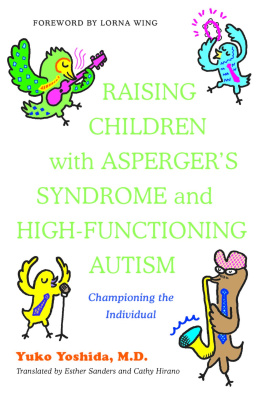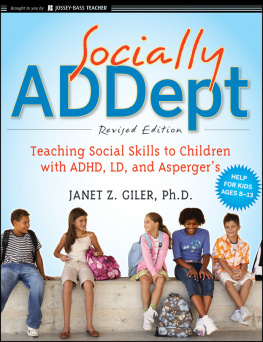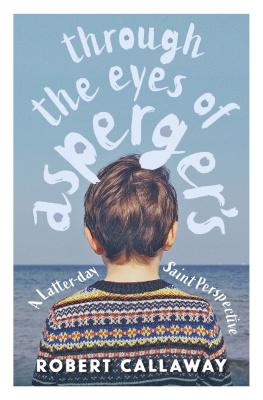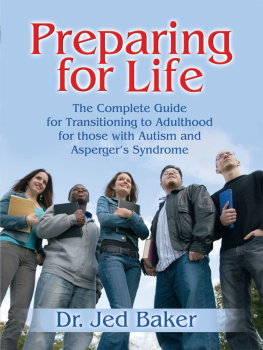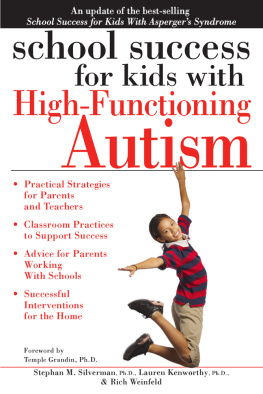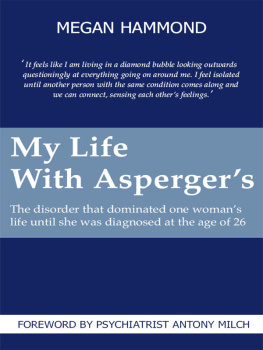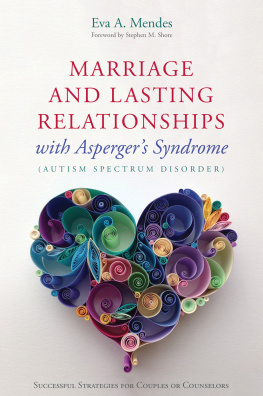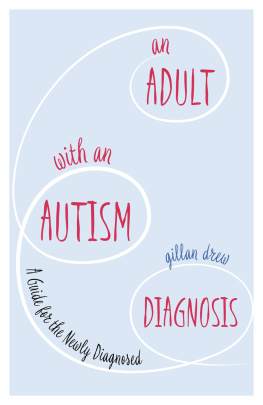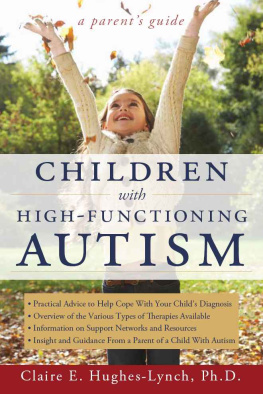NAVIGATING
THE
SOCIAL WORLD
A Curriculum for Individuals with
Aspergers Syndrome, High Functioning Autism
and Related Disorders
Jeanette L. McAfee M.D.

Navigating The Social World
All marketing and publishing rights guaranteed to and reserved by

721 W. Abram Street
Arlington, TX 76013
800.489.0727 Toll Free
817.277.0727
817.277.2270 Fax
www.FHautism.com
info@FHautism.com
Copyright 2002 Jeanette L. McAfee, M.D.
No part of this book may be reproduced in any manner whatsoever without written permission of Future Horizons, Inc. except in the case of brief quotations embodied in reviews.
Permission is hereby granted to photocopy any forms in this publication, provided the forms are for personal or teaching use only. Any commercial use, or use in other publications, regardless of its purpose, is prohibited.
Printed in Canada
ISBN 10: 1-885477-82-1
ISBN 13: 978-1-885477-82-8
Ebook ISBN: 978-1-935274-46-9
We should not live in the clouds, on a superficial level. We should dedicate ourselves to understanding our brothers and sisters.
Mother Theresa
This book is dedicated to my daughter, Rachel.
You have been my inspiration.
I could not have asked for a better teacher than you.
FOREWORD
When Jeanette and Keiths daughter was diagnosed as having high functioning autism, their long search for an accurate diagnosis was over. However, they began a new search for knowledge on how to help her. They were determined to learn more about high functioning autism and Aspergers Syndrome and how to provide effective programs for their daughter. They attended workshops and read the research journals and books that describe these conditions, but soon realized that there is remarkably little knowledge on remedial programs. Jeanette began to seek out other people who had worked with individuals with these disorders. She tapped into the experience of a variety of such people, including parents, teachers, speech therapists, occupational therapists, psychologists and applied behavioral therapists. She combined this knowledge with eleven years of experience working with her own daughter and with her training in pediatrics, and began writing social, behavioral, and abstract thinking skills programs for her daughter. These programs later became the foundation of this book.
It was while presenting a workshop in California that I met Jeanette. Her determination to learn more about AS, HFA, and treatment interventions included moving the whole family to Australia for three months to participate in the programs I was developing in Brisbane. While in Australia, Jeanette studied with me at my autism clinic and with two autism advisory teachers in the Brisbane region. In addition, we spent many hours assessing her daughters unusual profile of abilities and designing and implementing programs. We generated many new ideas that combined our respective experience. Jeanette subsequently incorporated many of these strategies into Navigating the Social World.
This how to book is written both for the novice and experienced professional and will be of enormous value to parents, teachers, and therapists. Jeanette has undertaken considerable work in designing handouts, worksheets and tracking forms that provide a structured, logical and progressive approach. There are clear explanations of the relevant issues for each goal and the activities are consistent with the theoretical models of autism and Aspergers Syndrome. After reading this book you can immediately start a program at home or school.
There is a special focus on recognizing and coping with emotions, communication, social understanding, and abstract thinking with practical examples and quotations from individuals with Aspergers Syndrome and High Functioning Autism. Jeanette adopts a common sense approach and I strongly recommend this book for parents, teachers and other professionals.
Dr Tony Attwood
August 2001
AUTHORS NOTE
When I originally started writing, this book was not even an idea in my mind. I wrote simply to provide a social skills and emotions program for my then ten-year-old daughter, Rachel. Rachel had just been diagnosed with high functioning autism (HFA) after years of puzzling physicians, teachers and my husband and me with her unique combination of strengths and special needs. After years of uncertainty about both her diagnosis and how to best help her with the multiple problems she faced, my husband and I reacted to the news of Rachels HFA diagnosis with relief. We believed we finally would be able to find an appropriate treatment program for her. However, we soon discovered that such a program was not going to be easy to find. Aspergers Syndrome (AS) had only been recognized as a distinct diagnosis under the umbrella of Pervasive Developmental Disorders (PDD) in the DSM IV in 1994. Thus it was no wonder that little was known about its diagnosis and etiology, and even less about how to treat it. In fact, my husband and I, both physicians, had never heard of either HFA or AS during our medical training. So we were sympathetic when the physicians and psychologists who diagnosed our daughter sent us on our way with the diagnosis, but were unable to suggest specific treatment programs for her. We turned to the next logical place for program optionsour local school districtand found that the special education team, including special education teachers and speech and language pathologists, faced the same dilemma. They had little or no knowledge of this new diagnostic category and had had essentially no training in its remediation. Over the last few years we have spoken with many other families and professionals from different parts of the country who have faced the same lack of trained professionals and available programs for children with AS/HFA. It is this need that has motivated me to write Navigating the Social World.
Curricula designed specifically to teach social/emotional, abstract thinking, and behavior management skills to individuals with AS/HFA and related disorders are only now beginning to appear. Many of the ideas in this book have been adapted from teaching and counseling methods that have been in existence for years to meet the specific needs of these students. Other ideas in this text are new. At this point in time most, if not all, programs designed to help individuals with AS/HFA are, of necessity, at the cutting edge of the field. There simply has not been adequate time to develop and test a wide range of treatment approaches in order to ascertain which of them works best. In short, we are still in the research and development phase of treatment for this very complex and often puzzling group of disorders. This is certainly the case with Navigating the Social World. For this reason, any input that you, the reader, can give about your experiences using the programs would be greatly appreciated. I hope to use feedback from readers to improve the programs in the future and to provide a forum for sharing ideas. I strongly believe that the more we work together to share ideas and experiences, the better we will be able to help our students, clients, and loved ones with Aspergers Syndrome, high-functioning autism and related disorders to live happier and more productive lives.
Jeanie McAfee
August, 2001
Next page

